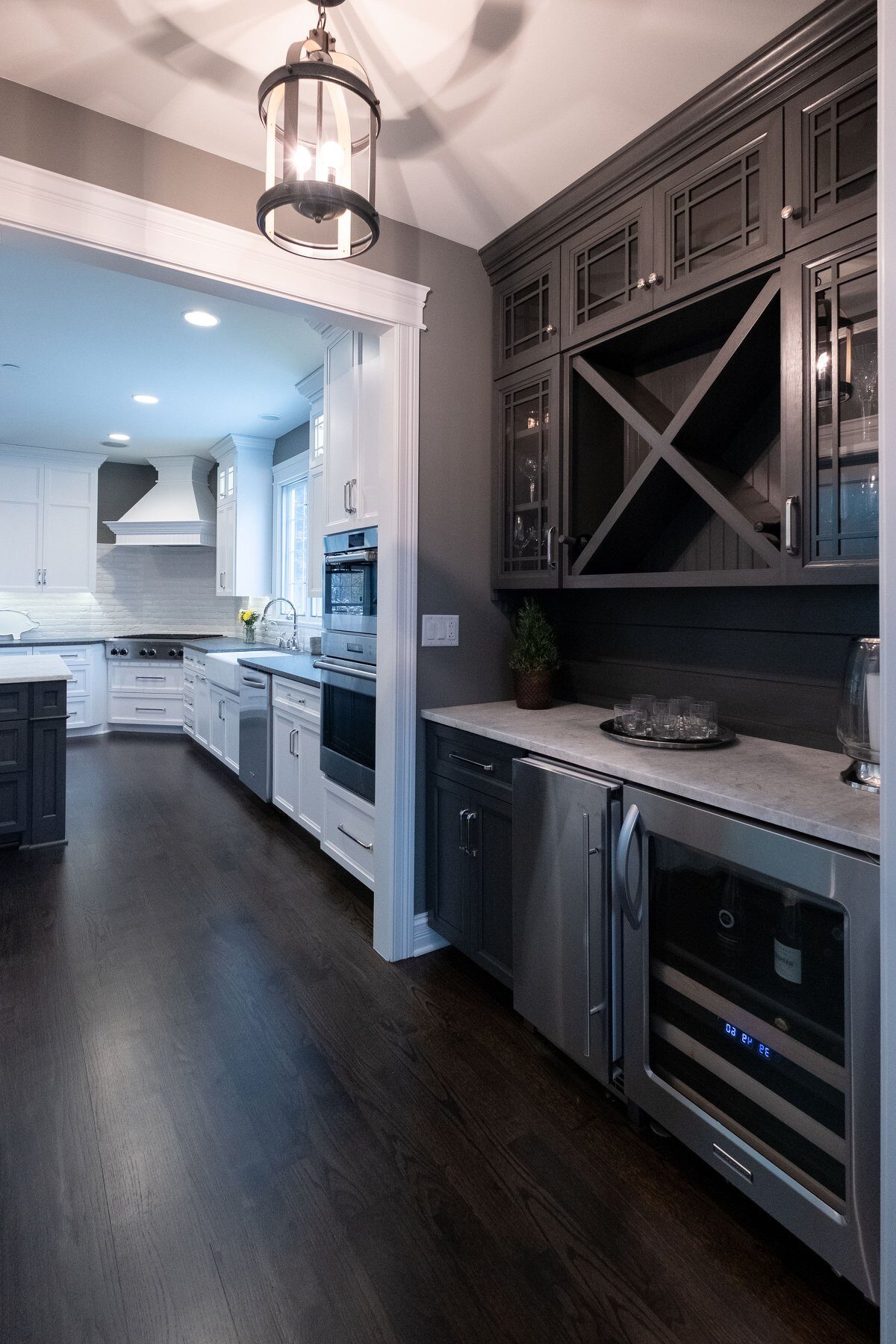A Case Study by Fears Construction Featuring B Design
Understanding the Design-Build Method
What is it, and what are the key benefits?
The design-build method is a streamlined approach to construction that combines design and construction phases under a single entity. This contrasts with the traditional design-bid-build process, which separates these phases, often leading to inefficiencies.

The Design-Build Method
In the design-to-build model, the contractor collaborates closely with designers, architects, and engineers from the project’s inception. This collaboration fosters a seamless transition from the initial concept through to the final construction, ensuring that every aspect of the design is practical, feasible, and aligned with the client’s vision. Here are the key steps involved:
1. Initial Consultation and Concept Development: The contractor meets with the client to understand their needs, preferences, and budget. This stage involves brainstorming and sketching initial concepts.
2. Design Phase: Detailed plans and specifications are developed, incorporating structural, mechanical, and electrical considerations. This phase often includes multiple iterations and revisions based on client feedback.
3. Cost Estimation and Budgeting: A comprehensive budget is prepared, covering all aspects of the project from materials to labor. The integrated approach helps in providing more accurate estimates.
4. Permits and Approvals: The contractor handles all necessary permits and regulatory approvals, ensuring compliance with local building codes and standards.
5. Construction: With design plans in hand, the construction team begins work. The close collaboration between designers and builders ensures that any issues are quickly addressed, minimizing delays.
6. Project Completion and Handover: Once construction is completed, a thorough inspection is conducted to ensure quality and adherence to the design. The finished project is then handed over to the client.


Design-to-Build vs. Traditional Design-Bid-Build
In the traditional design-bid-build approach, the client first hires a designer or architect to create the project plans. These plans are then put out to bid, and a contractor is selected based on the submitted bids. This process can often lead to miscommunication, increased costs, and extended timelines due to the separation of the design and construction phases.
In contrast, the design-to-build process ensures a unified vision from start to finish. With a single entity responsible for both design and construction, there is a greater alignment of goals, more efficient communication, and a cohesive workflow that can lead to better project outcomes.
Case Study: The Perfect Design-to-Build Kitchen by Tim and Blair's Team
One exemplary project that highlights the design-to-build process is the stunning kitchen renovation executed by the expert team at Fears Construction featuring B Design. This kitchen transformation is a classic example of how the design-to-build approach can result in a perfectly designed, highly functional space that stays within budget.
Tim and Blair's team worked closely with the homeowners from the very beginning, understanding their needs and preferences to create a kitchen that is both beautiful and practical. The project was meticulously planned, with every detail thoughtfully considered to ensure the final result was nothing short of spectacular.
This kitchen renovation has been widely featured and praised for its design excellence. It showcases how a well-executed design-to-build project can seamlessly blend aesthetics and functionality, creating a space that truly shines. The success of this project is a testament to the benefits of the design-to-build process, highlighting the expertise and dedication of Tim and Blair's team.
Key Benefits of the Design-Build Method
The design-to-build process offers several significant benefits that make it an attractive option for homeowners and developers alike:
1. Streamlined Communication: With a single entity responsible for both design and construction, there is a clear line of communication, reducing the potential for misunderstandings and ensuring that everyone is on the same page.
2. Cost Efficiency: Integrated budgeting and planning can help control costs and avoid unexpected expenses. The close collaboration between designers and builders allows for more accurate cost estimates and efficient resource use.
3. Time Savings: The unified approach can significantly reduce the overall project timeline. With designers and builders working together from the start, potential issues can be identified and resolved quickly, preventing delays.
4. Enhanced Quality: The design-to-build model fosters a collaborative environment where the entire team is invested in the project's success. This can lead to higher quality outcomes, with every aspect of the project being carefully coordinated and executed.
5. Flexibility and Innovation: The close partnership between designers and builders encourages creative problem-solving and innovative solutions, allowing for more flexibility in design and construction.
Conclusion
In conclusion, the design-build method is a highly effective approach that offers numerous benefits over traditional construction methods. By choosing a design-to-build contractor in Shorewood, IL, like Fears Construction featuring B Design, homeowners can enjoy a seamless, efficient, and high-quality project experience. Whether it's a kitchen renovation or a complete home makeover, the design-to-build process ensures that your space is perfectly tailored to your needs and vision.
If you have design-to-build needs in the DuPage, Kane, and Cook County areas of Illinois contact us. We are experts in the industry!
References
ActiveDraft. (2023). Design-Build Construction: How It Works, Advantages, and Considerations. Retrieved from activedraft.com
DBIA Institute of America. (2023). What is Design-Build? Retrieved from dbia.org
Horst Construction. (2023). Design-Build Construction Defined. Retrieved from horstconstruction.com
Korte Company. (2023). Design-Build: The Complete Guide. Retrieved from korteco.com
Procore. (2023). The Design-Build Method of Project Delivery Explained. Retrieved from procore.com


